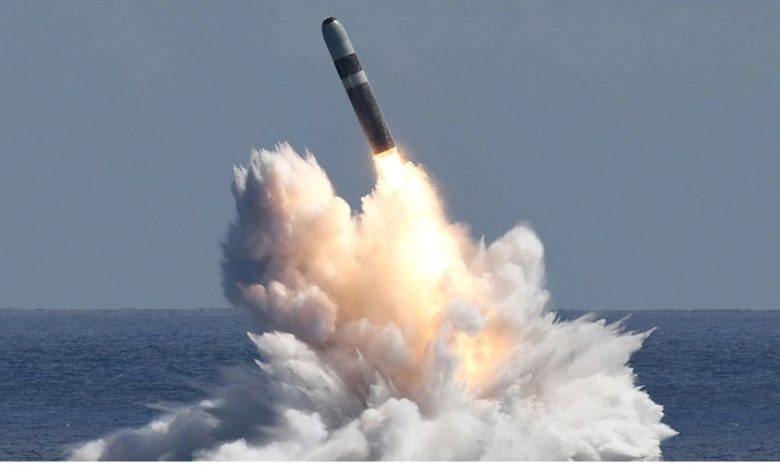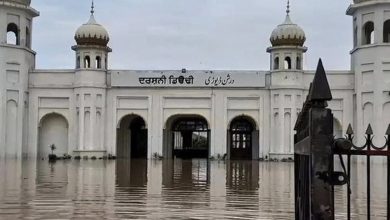Back to the brink

PUBLISHED
November 16, 2025
US President Donald Trump’s decision to restart US nuclear weapons testing, after a three-decade hiatus, has left allies anxious, adversaries alert and arms-control experts warning that even a hint of renewed testing could unravel a decades-old global taboo.
Announced via a Truth Social post, Trump claimed he had instructed the rechristened Department of War to begin testing “on an equal basis” with Russia and China.
While it remains unclear what exactly the infamously ambiguous Republican leader meant by “nuclear testing”, analysts sensed he appeared to conflate missile tests — which the US already conducts without live warheads — with explosive warhead tests, which no major power has undertaken since the 1990s.
The confusion over terminology has fuelled concern that Trump’s vague order could open the door to full-scale explosive tests.
Around the world, security experts and officials warn that resuming nuclear tests would be a destabilising step with far-reaching consequences. “Any explosive nuclear weapon test by any state would be harmful and destabilising for global non-proliferation efforts and for international peace and security,” Robert Floyd, head of the Comprehensive Test Ban Treaty Organisation in Vienna, told Reuters.
UN Secretary-General António Guterres likewise admonished that “nuclear testing can never be permitted under any circumstances”, invoking the “disastrous legacy of over 2,000 nuclear weapons tests carried out over the last 80 years”.
The legacy is grim: before the 1992 moratorium, nuclear blasts devastated environments and human health — from irradiating Pacific atolls to spreading cancer-causing fallout among downwind communities.
Breaking the decades-old taboo on testing now could unravel one of the key norms that has helped restrain the arms race since the Cold War’s end.
Security analysts believe that the US stands to gain little — and much to lose — by ending the test moratorium.
Daryl Kimball of the Arms Control Association has warned that “foolishly announcing [an] intention to resume nuclear testing” could “trigger a chain reaction”.
However, if history is any guide, such ambiguity is itself perilous. If rivals interpret Trump’s words as a green light for actual warhead tests, security experts stress that it needs immediate clarification to avoid worst-case responses. Allies and adversaries respond to signals, not intentions.
Meanwhile, Trump’s testing gambit has rattled both America’s allies and its adversaries. In US-allied capitals, the reaction has been one of dismay. European leaders and arms-control experts stress that a return to testing by the US would undermine global security — and they are urging Washington to step back.
“Trump’s thoughtless remarks on resuming nuclear tests deal another blow to the fragile multilateral disarmament architecture,” says Jana Baldus of the European Leadership Network, noting that with Russia already de-ratifying the Test Ban Treaty, “any US move towards renewed testing would further weaken it and risk reigniting new arms-race dynamics”.
She argued that European states must reaffirm the Comprehensive Nuclear-Test-Ban Treaty (CTBT) as “central to international security” and press the US to remember the “enduring costs of nuclear testing” before political posturing destroys one of the key pillars of arms control.
Similarly, a former NATO arms-control official, Lukas Kulesa, cautions that any US test would “significantly undermine the nuclear taboo” and erode non-proliferation norms.
Russia’s response was immediate and blunt. The Kremlin pointedly reminded Washington that no country (aside from North Korea) has broken the global testing moratorium since 1998, and vowed Moscow would not be the first to do so “unless others do so first”.
The mirrored escalation comes as no surprise — Putin had already engineered Russia’s withdrawal from CTBT ratification in 2023, precisely to “put Russia on par with the US” legally.
China, for its part, reacted with public urging for US restraint. Beijing formally called on Washington to “earnestly fulfil its obligations under the CTBT and honour its commitment to suspend nuclear testing”.
Beyond great powers, other nations have fiercely criticised Trump’s move as dangerous nuclear brinkmanship. Iran, a nation perennially accused by the US of nuclear ambitions, blasted Trump’s testing directive as “regressive and irresponsible”, denouncing the US president as a “nuclear-armed bully”.
Coming just months after US airstrikes hit Iranian nuclear facilities in June this year amid heightened tensions, Trump’s actions reinforce Tehran’s view of Washington as an aggressive hegemon using its nuclear might to intimidate weaker states.
Iran’s leadership even warned that it would rebuild nuclear sites and redouble resistance in the face of US threats.
Cold War Memories
Trump’s push to restart nuclear testing has revived memories of the Cold War, when the US–Soviet arms race took humanity to the threshold of annihilation. Nuclear testing was the backbone of that build-up.
The United States and USSR carried out more than 1,500 tests, each explosion convincing the other that falling behind was not an option. In 1961, Moscow’s 50-megaton “Tsar Bomba” — the largest ever — signalled sheer destructive power on a scale the world had never seen.
The brinkmanship reached its most dangerous point in 1962. The Cuban Missile Crisis pushed both powers to the edge of nuclear war and finally forced a reckoning.
President John F. Kennedy and Premier Nikita Khrushchev, anxious to cool the tinderbox, negotiated the Partial Test Ban Treaty in 1963, banning tests in the atmosphere, outer space and underwater. It still allowed underground tests, but it curbed global fallout and marked the first serious attempt to impose restraint.
A year after the Cuban standoff, Washington and Moscow moved to formalise that restraint with the treaty, yet underground detonations continued for decades. Still, something had shifted: the logic of arms control had begun to take hold.
By the early 1990s, with the Cold War collapsing, the push to end testing gathered momentum. In 1992, President George H.W. Bush declared a unilateral US moratorium. The last American nuclear detonation — “Divider” at the Nevada Test Site — took place that September. Four years later, the Comprehensive Nuclear-Test-Ban Treaty emerged, aiming to outlaw all nuclear explosions.
The US signed it, but the Senate refused to ratify it, leaving the treaty in limbo.
Even so, a powerful norm formed. Apart from North Korea’s periodic tests, no state has conducted a nuclear explosion since 1997. The informal ban has held for 33 years, sustained as much by diplomatic pressure as by legal obligation. India and Pakistan, despite not joining the CTBT, have refrained from testing since 1998.
Crucially, the long pause was not driven solely by goodwill. By the 1990s, the United States had already conducted 1,054 tests — more than any other nation — and its scientists, possessed vast data on warhead behaviour.
With advanced modelling and subcritical techniques, US labs could verify reliability without detonations. In effect, Washington could afford to stop because it had already tested so extensively.
Ending live tests preserved America’s qualitative edge while slowing others from catching up. US advocacy for the CTBT was, in part, an attempt to lock in that advantage.
The test-ban regime has thus served both global stability and US strategic interests. For three decades, it has kept the world from sliding back towards the Cold War’s cycle of escalation, making the current revival of testing rhetoric all the more dangerous in historical light.
Against this backdrop, Trump’s testing directive appears historically tone-deaf and strategically short-sighted. It seems to ignore the hard-earned lessons of the Cold War: that unchecked arms competition and nuclear one-upmanship can bring the world perilously close to annihilation.
In essence, resurrecting a Cold War-era practice now, amid a far more complex multipolar rivalry, risks replaying the darkest chapters of the 20th century — but this time without the robust arms-control frameworks that eventually reined things.



